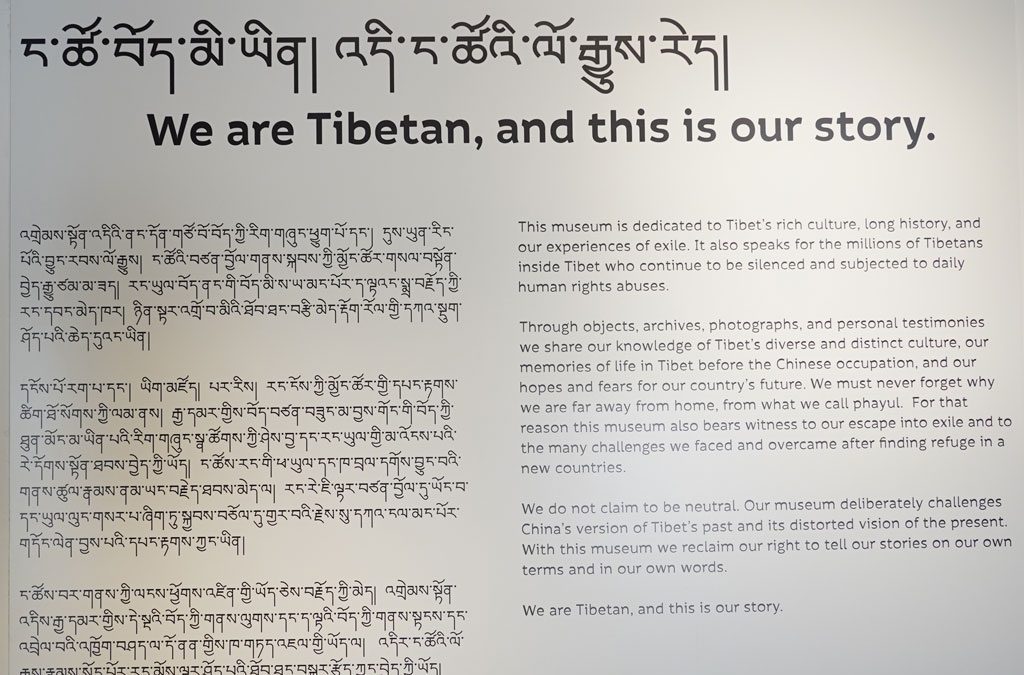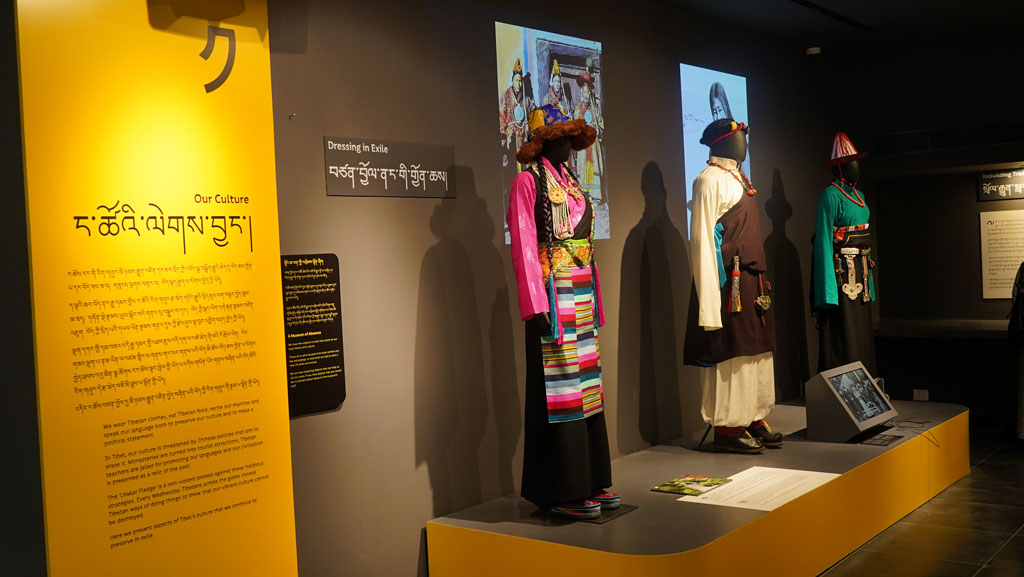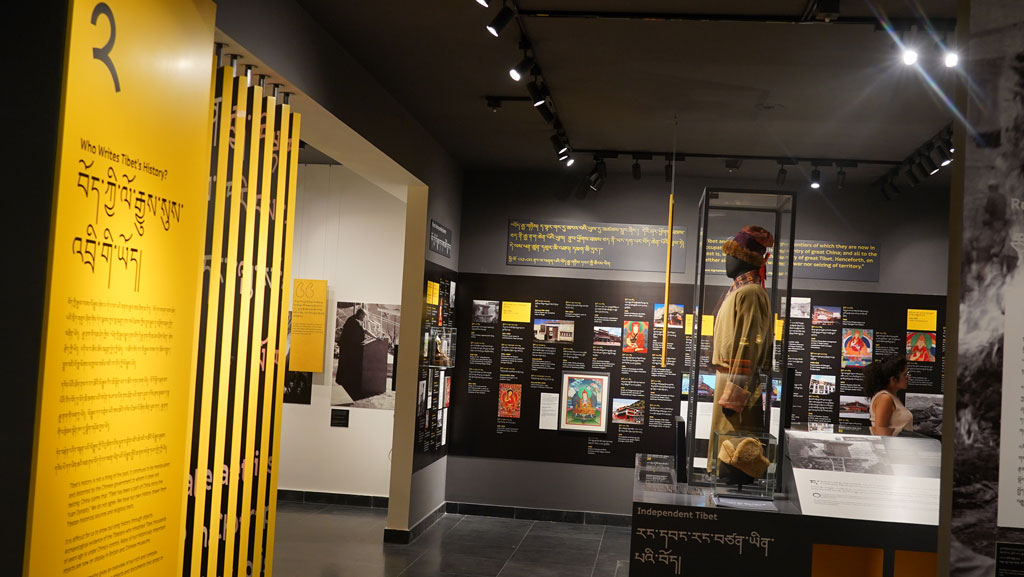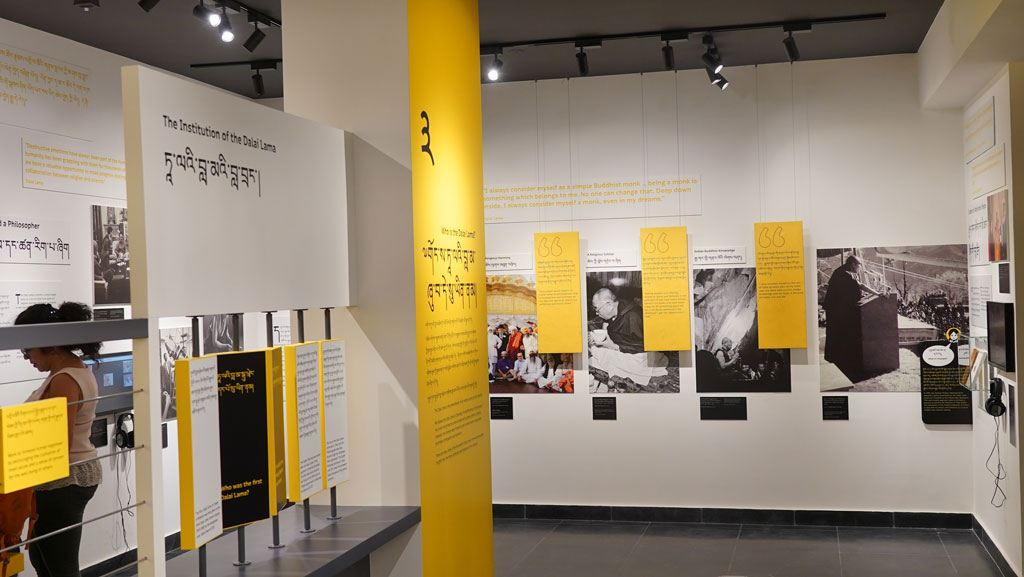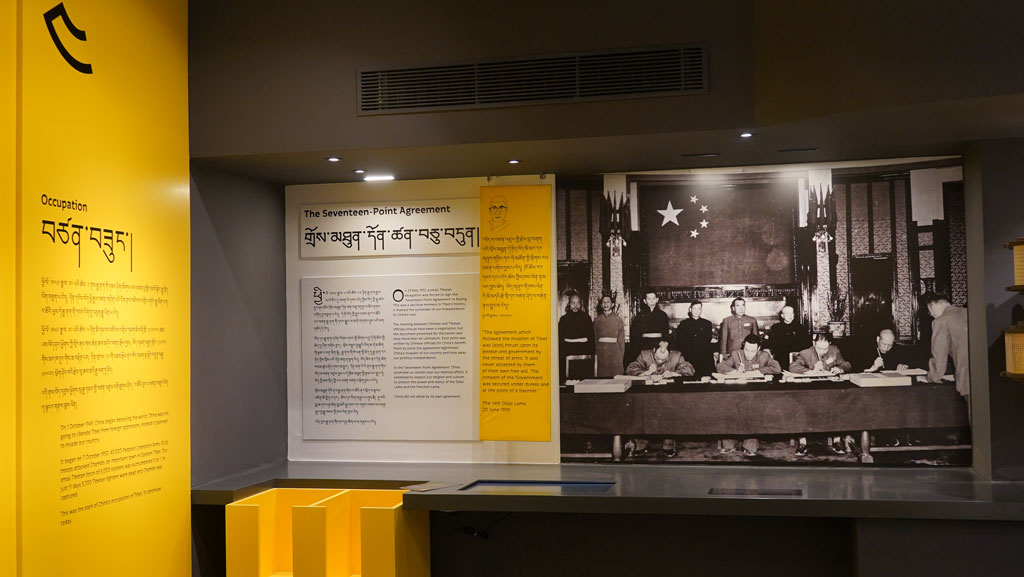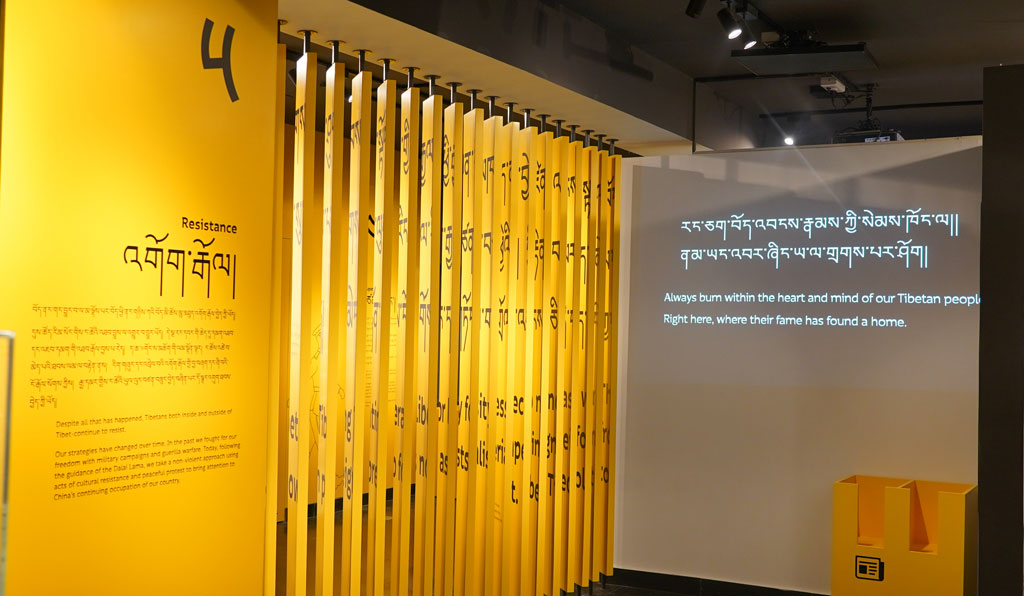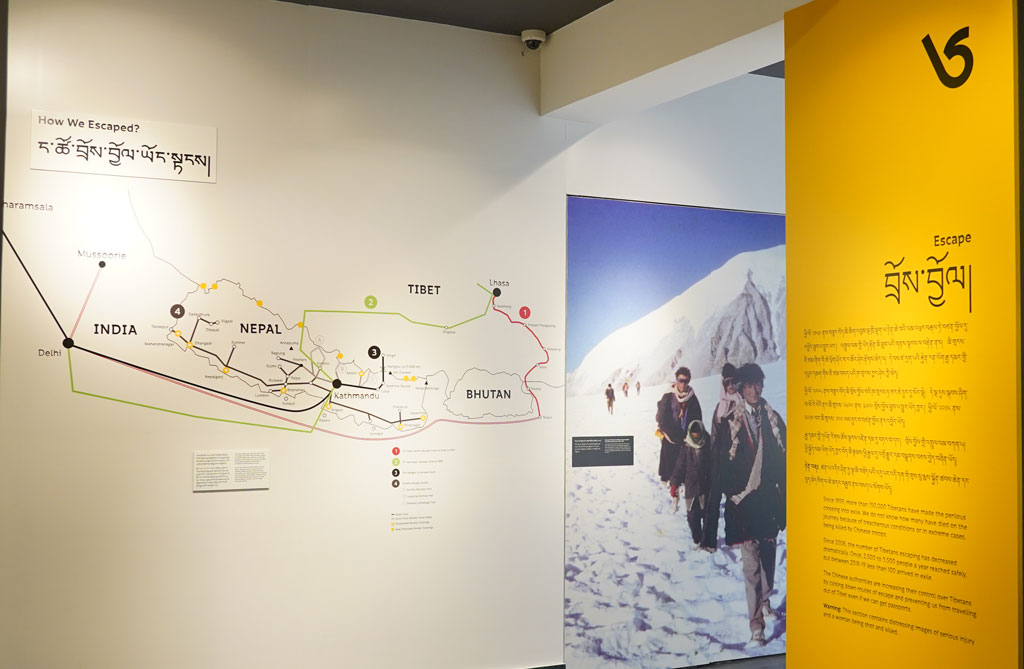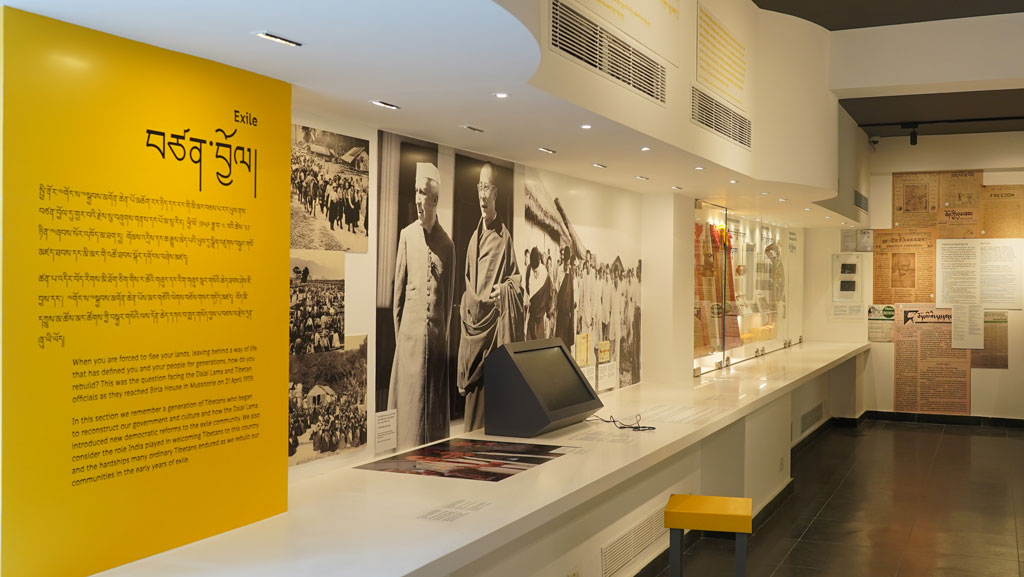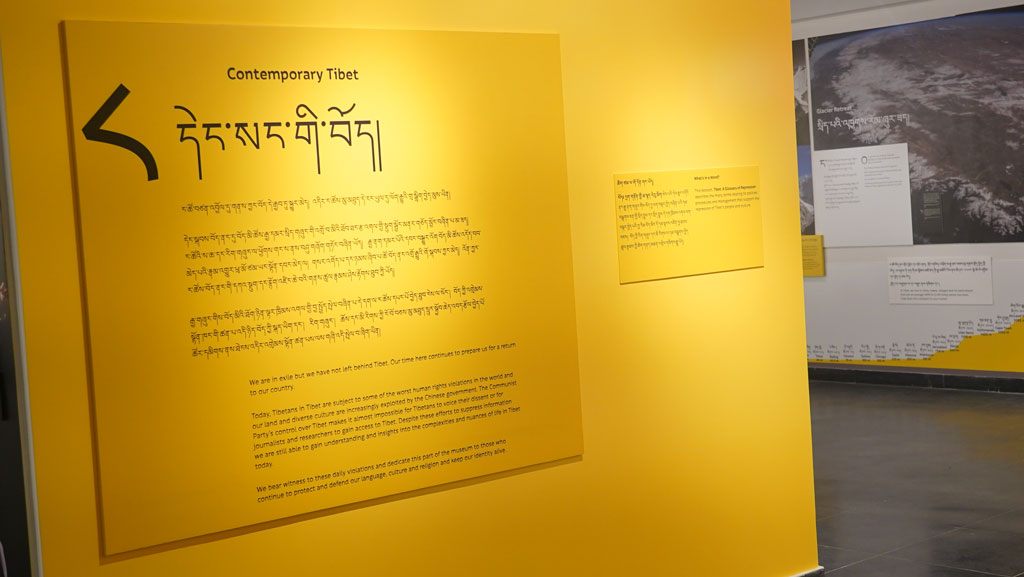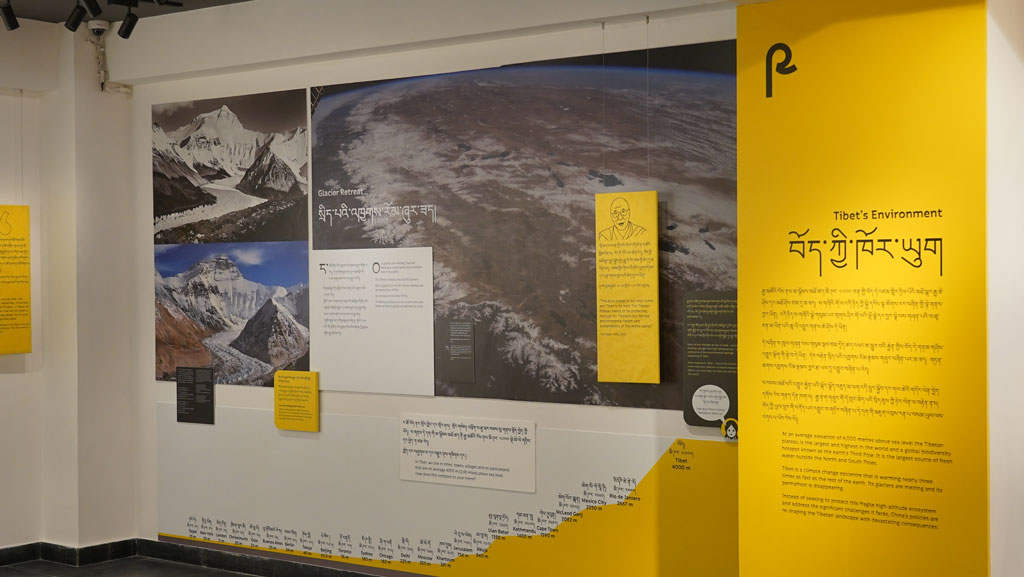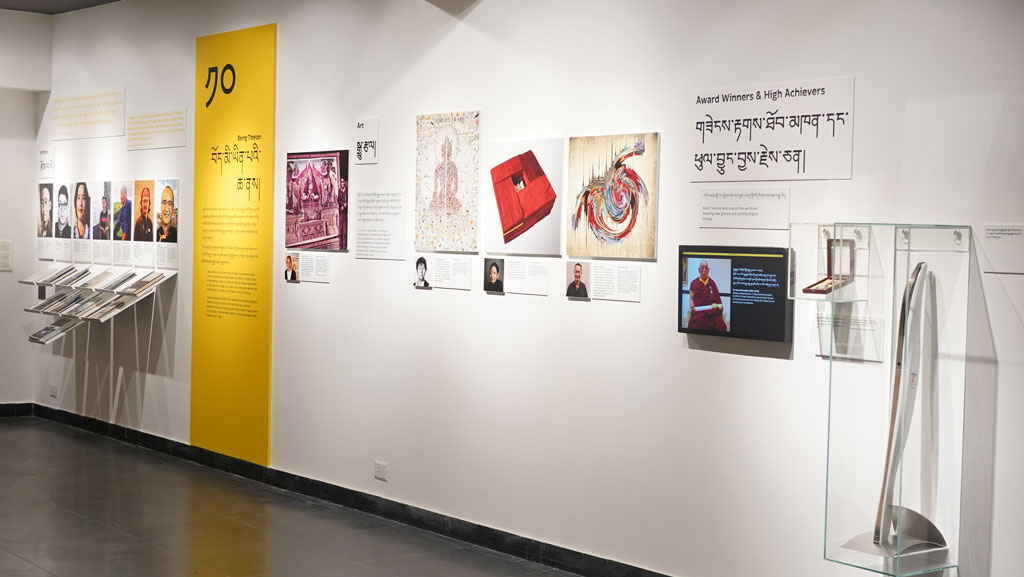Permanent Exhibition
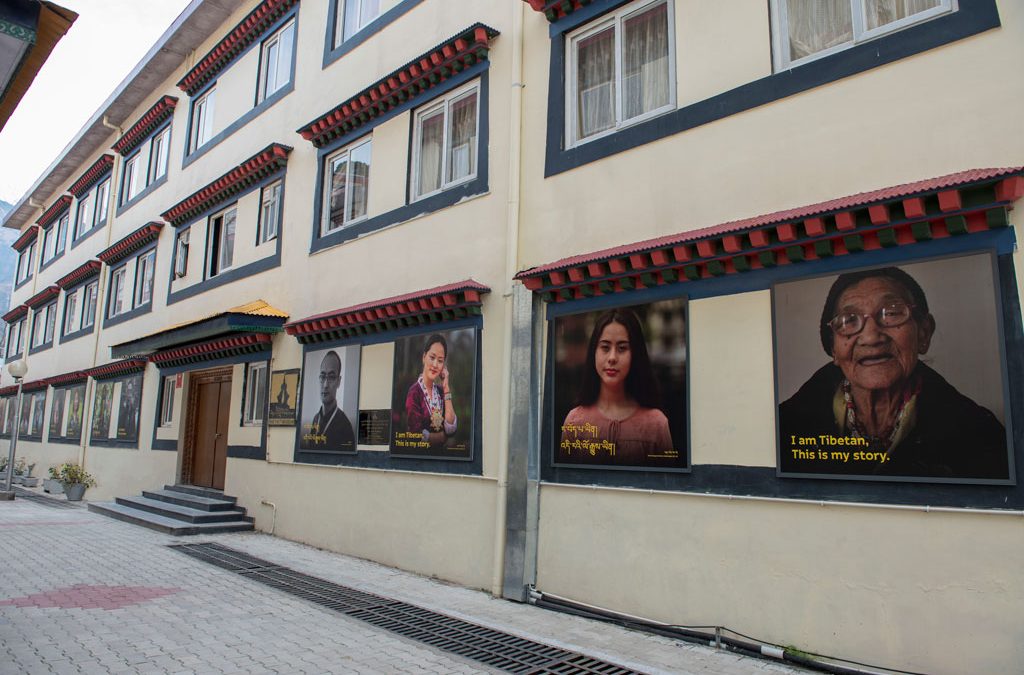
The Tibet Museum’s permanent exhibition, “I am Tibetan and This is my story” is a museum made by and for Tibetans. Its aim is to challenge the representations of Tibet and the Tibetan people that feature in museums in China, Europe and North America. Here, we tell a different story. Tibet in this museum has a past, a present and a future. Through objects, archives, photographs and personal testimonies we highlight Tibet’s historical, political and international importance by showcasing our culture, recent history in exile, and the teachings and legacy of His Holiness the Dalai Lama. We also address the many crises facing Tibetans in Tibet today such as human rights abuses, exploitation of the environment, and curbs on cultural preservation. The Tibet Museum highlights our cultural and political struggle, and our resilience. The objective of the museum is to educate, increase awareness of Tibet, and tell our story of exile to a global audience.

